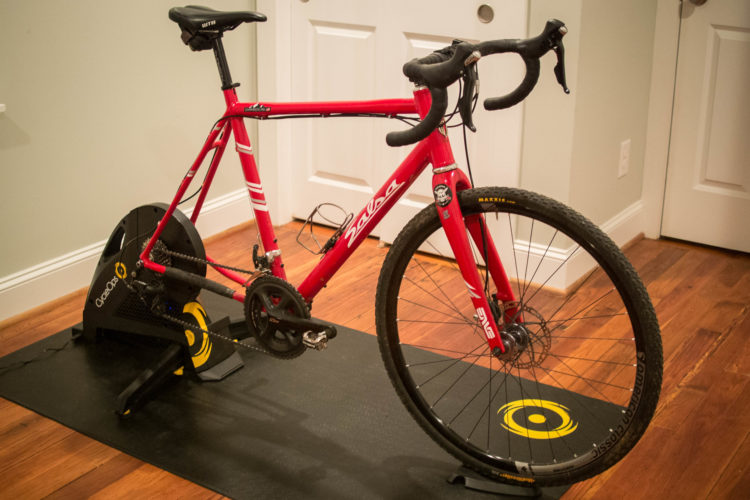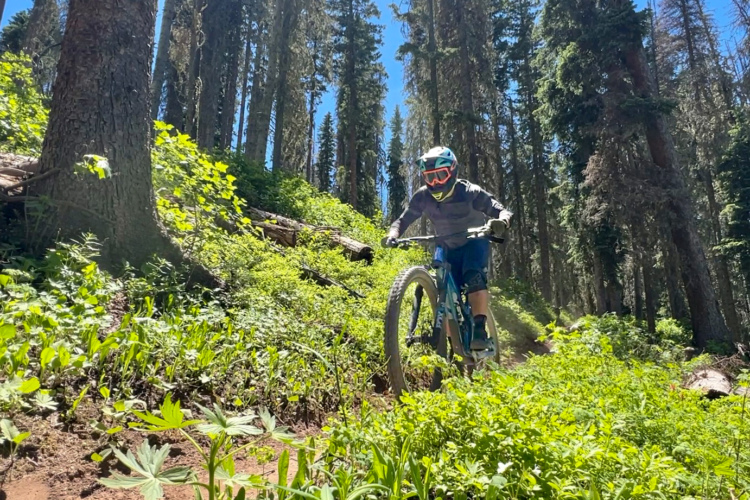
Roughly two days after writing a piece about riding in Italy during the Covid19 quarantine, our mayor tightened up the local restrictions for home confinement. The law today states that we can only leave our apartments to fetch groceries, go to the pharmacy, or take pets out for a walk around the block. A friend said she saw her neighbor walking a toy dog so that he could step outside to smoke. Though these quarantine measures are necessary, I can appreciate his decidedly creative loophole.
So we’re housebound for at least the next three weeks. The number of folks testing positive for the virus in Italy continues to rise, and elderly people continue to die from its symptoms, so again I say that these measures are necessary. In between working, reading, crafting, and strength training, I have unearthed some old cross-country trainer workouts that my partner’s coach created when she was racing the Pro XCT circuit. I reorganized them to be more general, as they were written for a specific athlete at a particular point in her season. Hopefully, a little workout structure can help you pass the time and maintain fitness while you’re housebound due to snow or invisible menaces.
After a roughly three-year hiatus from endurance racing, I am glad my partner kept a trainer around. It’s going to make this quarantine time far more bearable. For readers who have just purchased their first trainer, I will share some tips that help make the spin less boring. True trainer riding veterans may want to skip to the comments section and share some of their own tips and workouts.
First off, all trainers are not created equally, but they will all give you a workout while you’re sequestered. Wind trainers and rollers are louder and more affordable than others. Magnetic trainers, fluid trainers, and fancy robo-trainers that replace your rear wheel with a power meter doohickey are quieter, provide resistance adjustments, and can cost as much as a new bike. Some of them pair with software so you can pretend you’re outside riding with other people. If you’re considering purchasing a trainer or a set of rollers just to get through this quarantine, any inexpensive or used one should do the trick.
If possible, set up your bike somewhere that’s too cold for you to comfortably stand around. If you feel warm before pedaling you will boil once the workout starts. I prefer to pedal outside for the fresh air and to keep my stank out of the house. If you live somewhere warm, consider surrounding yourself with fans before you mount the saddle. Trainer rides are often fun-free, and a proper setup can make a significant difference in how long you will be able to sit and spin, and how much fitness you can gain or retain.
Next, find a set of videos, podcasts, or films to fill the amount of time you want to pedal for. Whether you’re swapping between 2019 EWS recaps and episodes of The L Word like me, or watching your favorite TV series, distractions will quiet the “is it over yet” monster. If you have loads of GoPro footage, this might be the perfect time to queue it up.
Quick tips
- Saddle position and cockpit setup are key when you’re sitting still spinning your legs. Make sure your trainer bike fits similarly to the bike you typically ride.
- Remember to hydrate often, as you will likely sweat more while stationary than you do while having fun outside.
- It’s always helpful to have a bath towel handy to wipe the salty sweat from your eyes.
- Stand up often to relieve pressure on your sit bones.
- Set up a fan if it’s warm.
- Wipe the sweat off your bike after to avoid cable corrosion.
Sample workouts
For trainer newbies, just spinning your legs for an hour is a good place to start. If you can shift up a few gears and make it harder through the middle 30 minutes, all the better. Once you grow bored of that and want to work on building some higher intensity fitness, there are endless resources and methods for building a massively powerful engine with a trainer. Here are some basic ones to start with.
For any intensity workout, it’s necessary to categorize intensity into amounts so we can increase and decrease it accordingly. Since we don’t all have power meters or heart rate monitors, we can gauge our perceived effort based on breath. There are a hundred ways to slice this “perceived effort” pie, and this is the one I was taught. If your breathing is calm enough to talk normally, that’s a warmup or recovery effort. When you push a little harder or spin faster, and you can still talk but it’s difficult to sing, you are likely close to your endurance effort. Once it’s uncomfortable to talk, and you have to pause and breathe every other word or so, you are reaching what coaches call the tempo zone. When it’s notably difficult to talk at all, and feels like you are climbing a steep hill with a brisk headwind, that’s your threshold zone. Above that, you have V02 and max sprint efforts, which are always short and sharply characterized by consistent pain and pools of sweat.
Snowbound cyclists know that trainer workouts need to be strategically planned to ramp up toward races or events, and timed to properly incorporate strength training and rest. The following, however, are general workouts for folks who want to maintain and boost fitness while stuck indoors and are not intended to be any sort of training plan.
First trainer ride beyond an easy leg spin
- Warm up with a light spin for 10 minutes
- For 2 minutes, clip out with one foot at a time and spin with a single leg, alternating sides every 15 seconds
- With both feet on the pedals, spin as high as you can for 1 minute.
- Easy spin for 1 minute
- Spin with a high cadence (90 RPM+) in your endurance zone for 10 minutes
- Easy spin for 3 minutes
- Spin a comfortable cadence at your higher tempo zone for 5 minutes
- Easy spin for 3 minutes
- Pick it back up for an additional 10 minutes of tempo
- Repeat single leg and high cadence drills
- Easy spin for the remaining time
- Stretch, hydrate
A little bit louder now
- Continue with the same warmup and single leg drills as above
- Heat it up with 10 minutes at endurance
- Easy spin for 2 minutes
- Climb an invisible hill at threshold for 5 minutes, standing for 10 seconds at the end of every minute
- Easy spin for 2 minutes
- Attack the next long climb for 5 minutes of threshold, standing briefly at the end of every minute
- Easy spin for 2 minutes
- One final climb of 5 minutes at threshold
- Easy spin to cool down through the remaining time
- Stretch, hydrate
A LOT LOUDER NOW Done correctly, you’ll feel this one the following day.
- Continue with the same warmup and single leg drills as above
- Push through 15 minutes of endurance pedaling
- Easy spin for 2 minutes
- Ramp up 5 minutes at threshold, alternating between harder and easier gears every other minute to change the cadence
- Easy spin for 2 minutes
- For 5 minutes (energy dependant) maintain threshold at a markedly higher cadence than your previous efforts. Holding a high cadence becomes increasingly difficult with fatigue, so this should feel fairly challenging.
- Easy spin for 10 minutes
- Stretch, hydrate
More variation
- Easy spin for 10 minutes
- 5 minutes at tempo
- 3 minutes at threshold
- 1 minute rest
- 2 minute V02
- 2 minute rest
- 8 minute, low & high: switch between the base of your threshold effort and the upper limit every other minute
- 2 minute rest
- 8 minutes of threshold, sitting or standing every other minute, using a hard gear
- 2 minute rest
- 3 minutes of buildup, starting at tempo and ending with V02 in the final 30 seconds
- 1 minute sprint effort
- 2 minute rest
- 8 x 20 second max effort sprints with 10 second rests between
- 10 minute cooldown
If these are too hard you can always cut the interval duration, and if they’re too easy, shift up and spin faster. Hopefully, we can all forget about this trainer riding nonsense soon, and go smell the forest. Until then, these stationary contraptions can strengthen both physical and mental health.

Do you have trainer riding tips or tricks to share? Maybe a favorite film or a race to watch? Please share it with our community in the comments below.




















0 Comments